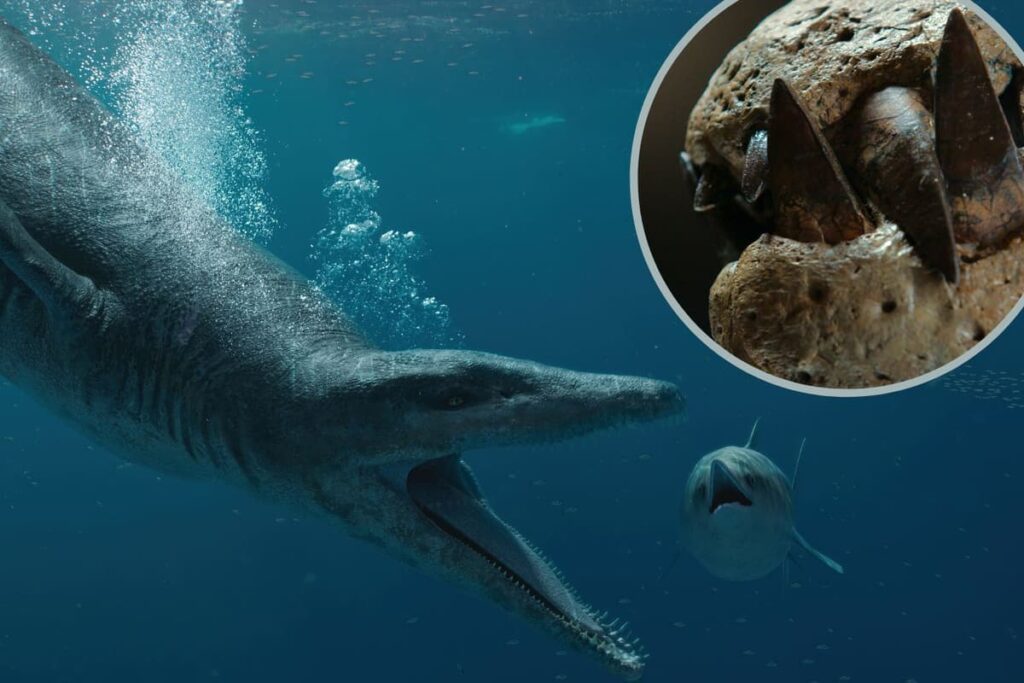
1. Massive, Pristine 150-Million-Year-Old Pliosaur Skull Discovered in England
Kimmeridge Bay, England, The skull of a massive marine creature that roamed the waters over 150 million years ago has been found off the coast of England. The massive fossil, about seven feet long and belongs to a sea reptile called a pliosaur, was discovered on Dorset’s Jurassic Coast.
The pliosaur will be featured in the brand new BBC documentary by David Attenborough, which will air on New Year’s Day – “What is a Pliosaur – The Underwater T. Rex?” With its ability to hunt and kill with a single bite, it was called the “ultimate killing machine” and the “apex predator in the ocean.” There are about 130 long, extremely sharp teeth in the cranium. Each tooth includes tiny ridges on the back to puncture the flesh of its target and prime itself for an immediate follow-up bite.
Thank you for your generous gift that will help us continue the production of this weekly, free publication

2. Sharpening CITES’ Teeth Against Illegal Wildlife Trade
The Convention on International Trade in Endangered Species of Wild Fauna and Flora endeavors to be “supportive and non-adversarial” in helping Parties meet their commitments to ensure that long-term international commercial trade can support national economies, people and, ultimately, does not threaten species’ survival. But, sometimes, that requires a sharp decision to suspend trade if countries are consistently not implementing CITES provisions – this is where trade restrictions under Article XIII of the Convention text come in.
“Triggering Article XIII is considered a serious indication of apparent systemic or structural problems with the implementation and enforcement of the Convention.” In other words, Article XIII is triggered when a Party consistently or continually fails to keep up with their commitments to specific species CITES rules. Click on the link for the rest of the story!
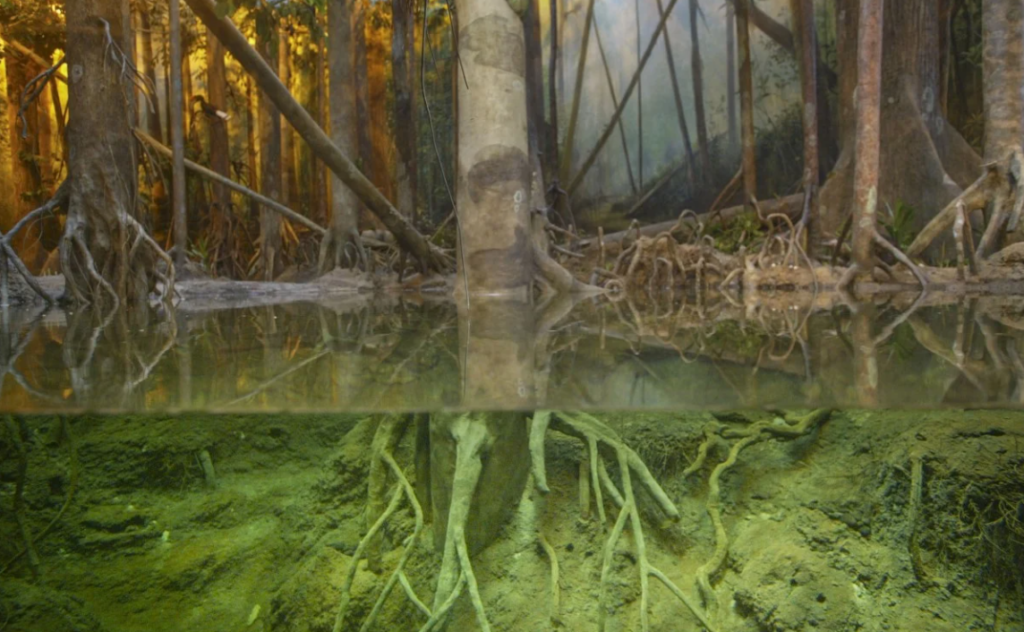
3. Indonesia, Tanzania Utilize Eco-Tourism for Mangrove Protection in Climate Battle
COP28, Dubai, At the 28th United Nations climate change conference in Dubai, carbon dioxide-absorbing mangroves were in focus for their ability to help slow climate change. Experts from Indonesia and Tanzania were among those who spoke about why protecting mangroves requires expertise and smart funding. On the coast of Tanzania’s Mafia Island is a blue lagoon surrounded by mangroves.
Ailars David, a marine conservation warden at the reserve, says there is a plan to build a boardwalk for tourists to reach the lagoon so they can swim surrounded by nature. David hopes this nascent eco-tourism project can help fund work to patrol the Marine Protected Area’s mangrove forest. Experts stress the importance of involving local people in protection plans because some on Mafia Island want to cut down the coastal vegetation as wood for cooking or to open access to the beach.

4. Bird Flu Kills Over 900 Seals, Sea Lions in South Brazil
SAO JOSE DO NORTE, Brazil, Nearly 1,000 seals and sea lions in southern Brazil have died from bird flu outbreaks, say authorities, who are scrambling to isolate the deadly virus from commercial poultry flocks. The southernmost state of Rio Grande do Sul has confirmed an unprecedented 942 sea mammal deaths following infection by the highly pathogenic avian influenza (HPAI), which was reported for the first time ever in the South American country this year.
Oceanographer Silvina Botta, at the Rio Grande Federal University (FURG), said the carcasses have to be buried or incinerated as soon as possible to reduce the risk of contaminating humans or other animals. Since Brazil’s first report of HPAI in wild birds in May, the Agriculture Ministry says preventive measures have avoided an outbreak on commercial poultry farms, which could trigger export bans against Brazil, the world’s top chicken exporter.
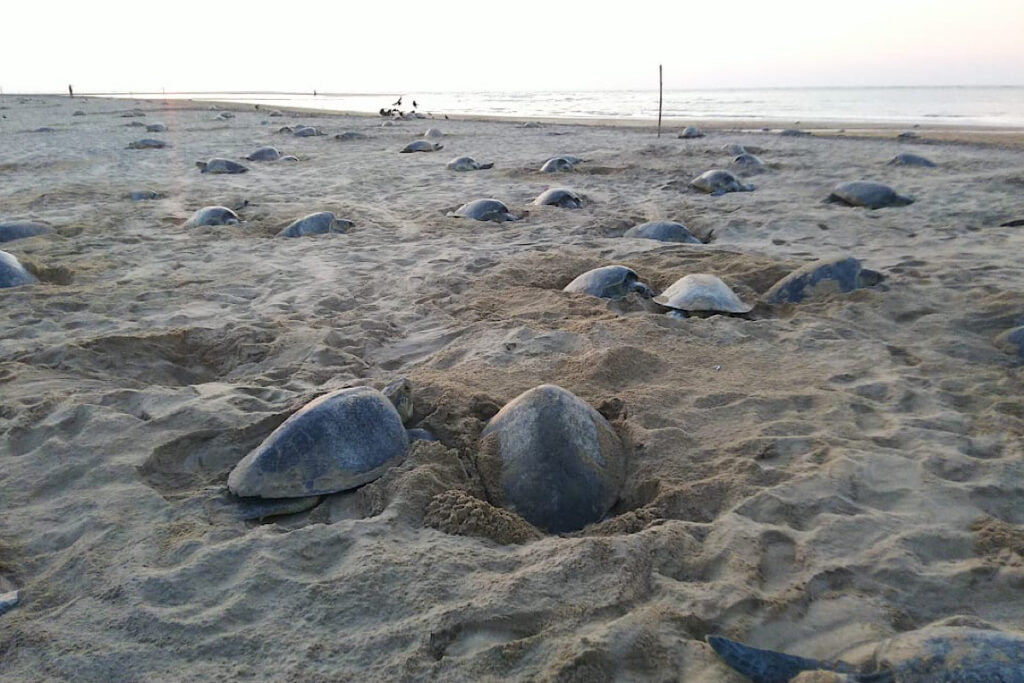
5. Odisha Prepares for Mass Nesting of Endangered Olive Turtles
Odisha, India, With the coastal State attracting millions of endangered olive ridley sea turtles every year and housing the world’s largest-known nesting ground of these species, the Odisha Government has moved to ensure the safety of these heritage marine creatures by adopting a slew of conservation measures.
The Departments of Forest and Environment, Fisheries and Animal Resource Development, police, marine police, coast guard, and port authorities are in cohesion at the ground level in conservation and nurturing of the olive ridley.
Sixty-six patrolling teams including 61 on-shore units have been constituted to nab the trawling operation, which is detrimental to the breeding turtles. Turtles often perish either by getting entangled in fishing nets or by being hit by the propellers of vessels, said officials. To see the rest of the conservation methods, click the link!
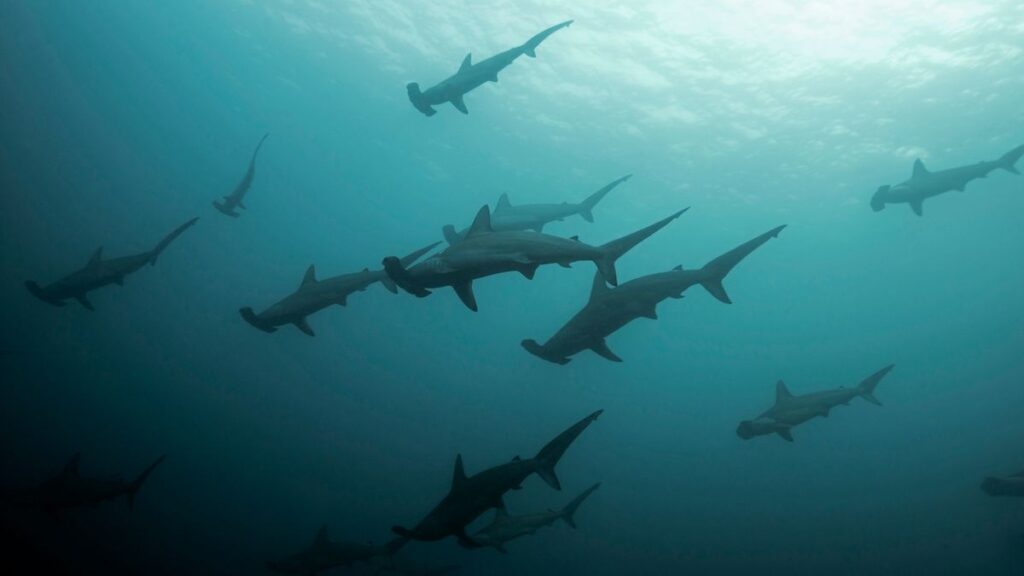
6. Hammerhead Sharks Disappearing from Gulf of California Sea Mounts, Divers Report
USA, Hammerhead sharks have seemingly disappeared from two underwater mountains in the southwestern Gulf of California, and fishing is likely to blame, a new study has found. Researchers looked at observations from divers over the last 50 years and found that scalloped hammerhead sharks (Sphyrna lewini) experienced a 97% decline at the El Bajo seamount and a 100% decline at the Las Animas seamount — both off the coast of Mexico — between the 1970s and 2010s.
Study lead author Kathryn Ayres told Live Science that she was “saddened but not surprised” by the results. Ayres investigated the sharks’ decline as part of an internship with the nongovernmental organization (NGO) Pelagios Kakunjá and is now a research scientist at a separate NGO called Beneath The Waves. The study will appear in the January 2024 issue of the journal Marine Policy but has been available online since Nov. 22.
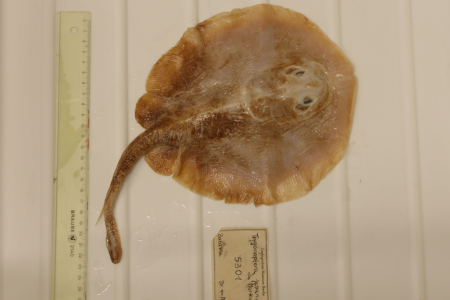
7. First Marine Fish Extinction Marks Global Biodiversity Tipping Point
Australia, A species of ray, so rare it has only ever been recorded once back in the late 1800s, has been declared extinct after an assessment by an international team led by Charles Darwin University (CDU). The loss of the Java Stingaree, a small relative of stingrays, is the first marine fish extinction as a result of human activity. The Java Stingaree (Urolophus javanicus) was known only from a single specimen collected in 1862 from a fish market in Jakarta, Indonesia.
This news comes as the International Union for Conservation of Nature (IUCN) released its updated Red List of Threatened Species today. CDU’s Research Institute for the Environment and Livelihoods Senior Research Fellow Dr Peter Kyne said there are over 120 Critically Endangered marine fishes in the world and that the loss of the Java Stingaree is a tipping point for marine biodiversity.
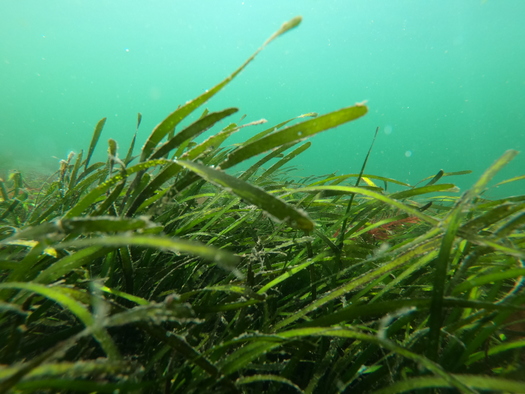
8. Washington State’s Kelp, Eelgrass Recovery Plan Tackles Big Losses in Marine Habitat
Washington State, USA, Bull Kelp in South and Central Puget Sound has declined more than 90% over the last 150 years and eelgrass meadows severely declined as well, according to a new report just delivered to lawmakers. The Washington Department of Natural Resources’ new plan aims to reverse the losses, with a goal to conserve and recover at least 10,000 acres of kelp and eelgrass habitat by 2040.
Three general areas will host pilot projects: Grays Harbor, South Puget Sound, and the eastern strait of Juan de Fuca. Eelgrass and kelp are crucial habitats for many species, especially juvenile salmon and Dungeness crab. They are good at storing carbon and can provide physical shoreline stabilization. However, they are threatened by rising water temperatures, invasive species, water pollution, and shoreline development. The DNR will convene public stakeholder meetings early next year.
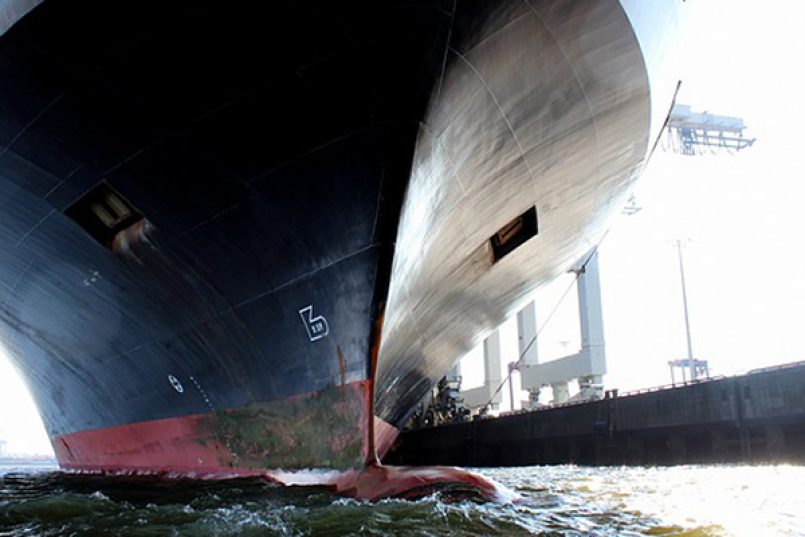
9. Better Slippery Marine Antifouling Coatings on Ships
The goal is to combat marine biofouling, which increases the navigation resistance and energy consumption of ships and also accelerates the corrosion of offshore engineering structures. To do so, researchers propose infusing paraffin-based lubricant into micro-/nanostructures for constructing slippery marine antifouling coatings.Slippery liquid-infused porous surfaces (SLIPS) have enormous potential to substitute for traditional antifouling coatings due to green broad-spectrum antifouling properties.
However, the serious loss of lubricants is a major problem in their applications. Now, anodic aluminum oxides (AAO) with different morphologies were prepared, modified with siloxane, and infused with paraffin-based lubricant to explore the lubricant retention capacity of specially-designed AAO. The results showed that pyramid-like cluster structures on the porous surface can offer large space to store more lubricant, forming a barrier to alleviate lubricant loss to a certain extent.
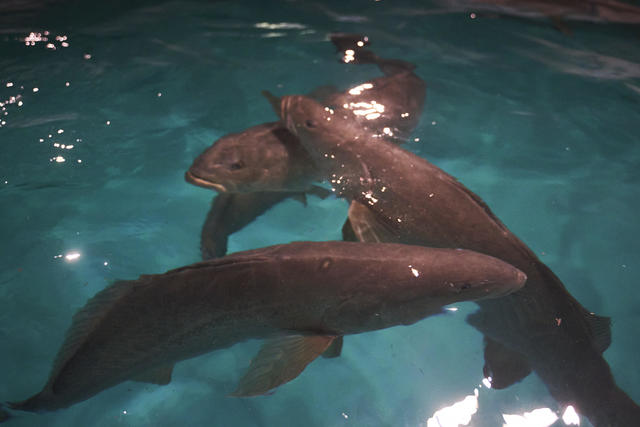
10. Mexico-Based Startup Accused of Selling Health Drink Made From Endangered Fish
Environmental watchdogs accused a Mexico-based startup Thursday of violating international trade law by selling a health supplement made from endangered totoaba fish. The company, The Blue Formula, could be selling fish illegally caught in the wild. The product, which the company describes as “nature’s best-kept secret,” is a small sachet of powder containing collagen taken from the fish that is designed to be mixed into a drink.
Under CITES, any export for sale of totoaba fish is illegal, unless bred in captivity with a particular permit. Gillnet fishing for wild totoaba is illegal and one of the leading killers of critically endangered vaquita porpoise. But gillnetting is driven by the exorbitant price for totoaba bladders in China. In October U.S. Customs and Border Protection seized over $1 million worth of totoaba bladders in Arizona, hidden in a shipment of frozen fish.
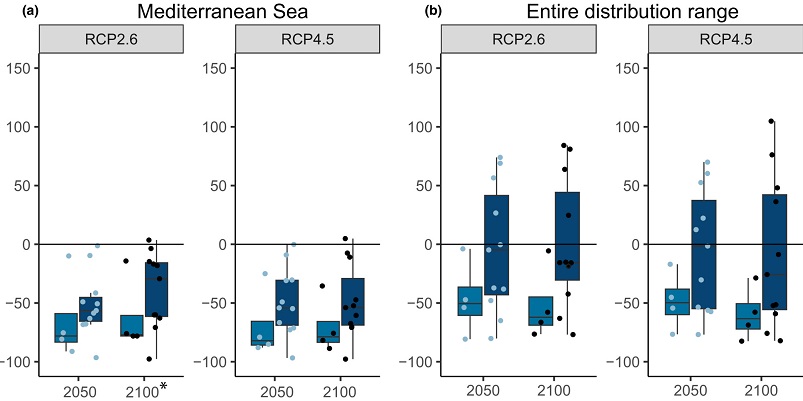
11. The Climate Crisis Affects Mediterranean Marine Molluscs
The Mediterranean Sea is warming at two to three times the rate of the global ocean. The continental masses that surround it constrain species range shifts. Therefore, as seawater temperature increases, distributions of marine species may contract into a few small cooler refugia, with consequent risk of extinction from range contraction and fragmentation. This research paper assesses this risk for 15 molluscs of conservation concern occurring in the Mediterranean Sea.
As hypothesized, the researcher’s models predicted major range shifts, contractions, and fragmentation for all species. Under moderate emission scenarios, up to 12 of the 15 target species will be eradicated from the eastern and southern warmer sectors. Under severe emission scenarios, they predict the global extinction of the endemic Patella ferruginea and Pinna nobilis. Non-endemic species may buffer range loss in the Mediterranean with range gains in the Atlantic Ocean.
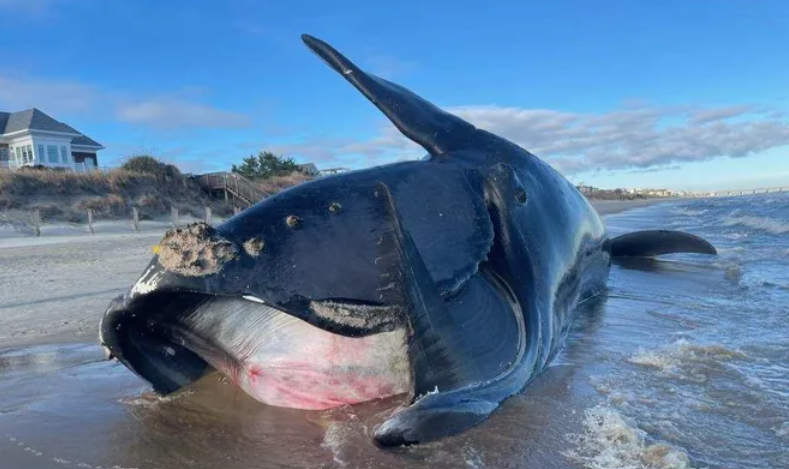
12. Speeding Vessels off Georgia Coast Imperiling Whales, Report Finds
Georgia/Carolinas, USA, Large vessels operating off the coasts of Georgia and the Carolinas – including ships using the ports of Savannah and Brunswick – are flouting seasonal speed limits created to protect the endangered North Atlantic right whale. A recently released report by the conservation organization Oceana found that 85% of watercraft at least 65 feet in length exceeded the maximum of 10 knots (11.5 mph) in a designated protective area stretching from Brunswick to Wilmington, North Carolina.
The National Marine Fisheries Service issued the speed regulations in 2008 when it created whale conservation zones for large vessels up and down the East Coast. The limits run from mid-November to mid-June because that period is considered calving season when right whales from as far away as Canada travel to the shallow waters off southern Georgia and northern Florida to birth their young.

13. New Zealand, Kermadec Sanctuary: A Balancing Act
New Zealand, The Kermadec Rangitāhua Ocean Sanctuary, proposed by former Prime Minister John Key, aims to protect a unique marine ecosystem, featuring diverse wildlife and significant geological structures. However, the bill has faced opposition, particularly from Fisheries Minister Shane Jones, citing concerns over Treaty-negotiated rights and economic impacts.
The sanctuary would ban activities like fishing and mining, stirring debate among various stakeholders, including the Pew Ocean Legacy Trust, iwi Māori, and the fishing industry. This tension reflects a larger discourse on balancing environmental conservation with cultural and economic interests in New Zealand.
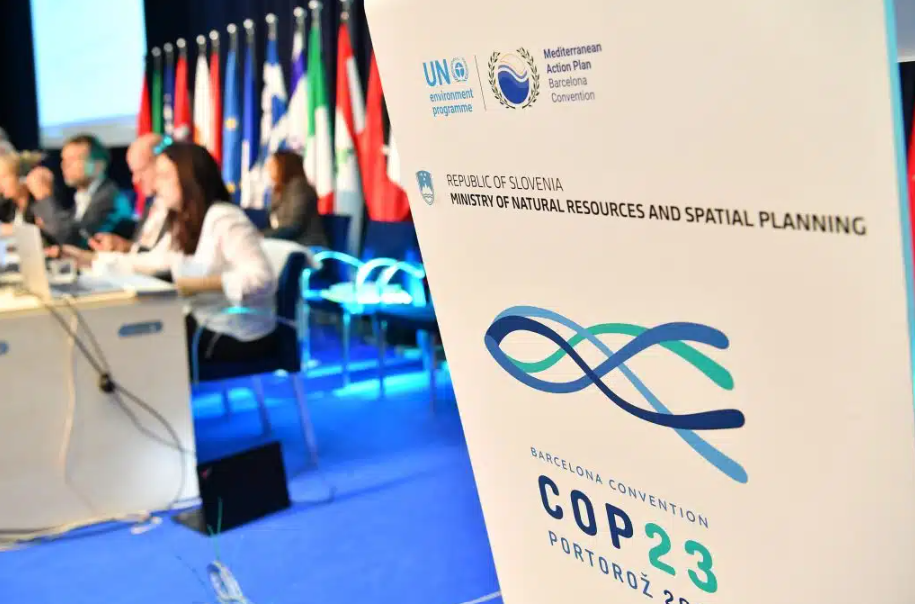
14. UN Barcelona Convention COP23 Commits to a Green Transition in the Mediterranean
Barcelona, Spain: The 23rd Meeting of the Contracting Parties to the Barcelona Convention and its Protocols (COP23) marked a historic milestone in the pursuit of environmental protection and sustainability. Held in Portoroz, Slovenia, from 5-8 December 2023, the conference addressed the pressing issues of climate change, biodiversity loss, and pollution, collectively recognized as the triple planetary crisis.
The resulting Portoroz Ministerial Declaration outlines crucial steps toward a green transition in the Mediterranean region, emphasizing the urgency of action and the need for collaborative efforts. The closing moments of COP23 marked not an end but a new beginning – a rallying call for a greener, more sustainable future for the Mediterranean and a reminder that the journey toward environmental stewardship is an ongoing, collective endeavor.
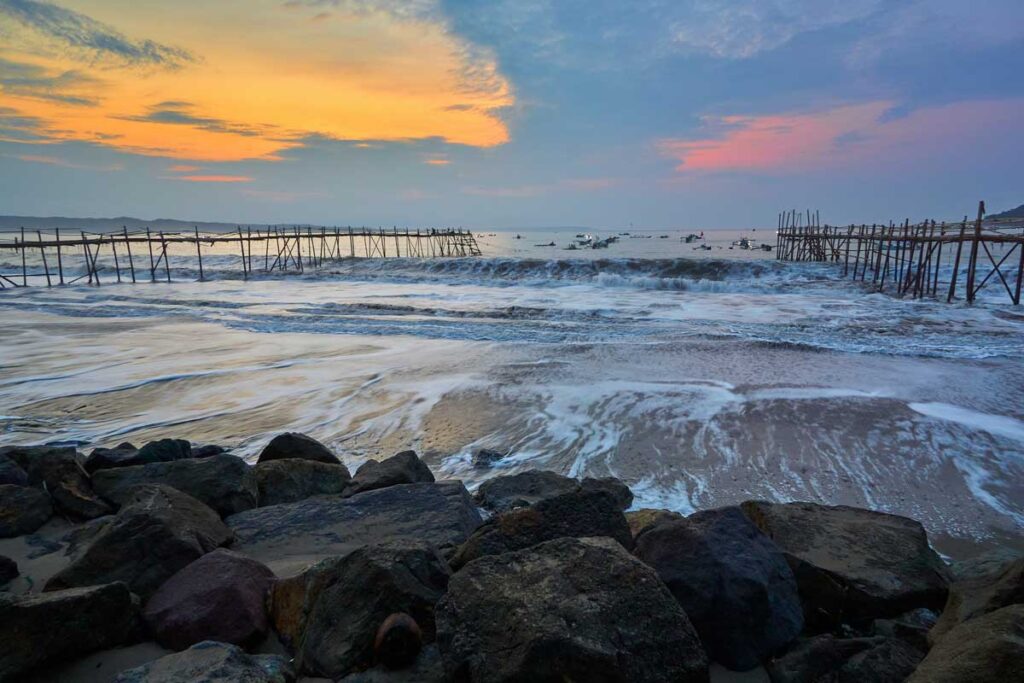
15. Status Quo and Potential Transformation of Java Island’s Coastal Areas Into Low-Carbon Tourism
Java, Indonesia. This article is an essay reflecting on the Marine Resources and Coastal Management (MRCM) course field trip at two coastal destinations in Java Island, Indonesia – Parangtritis in the south and Karimunjawa Island in the north. Organized under ASEAN Master in Sustainability Management program at UGM, Indonesia, and UiA, Norway, this course was delivered by Professor Muh Aris Marfai, distinguished Head of the Geospatial Agency of Indonesia.
The status quo from the observed physical sandy shores and underwater lives as well as the socio-economic characteristics of these locals will be discussed further. In addition to highlighting the best practices employed in these areas to achieve Sustainable Development Goals (SDGs) and challenges, this article also aims to chart the transformation into low-carbon tourist destinations with respect to scientific-based approaches in managing marine resources and coastal areas.
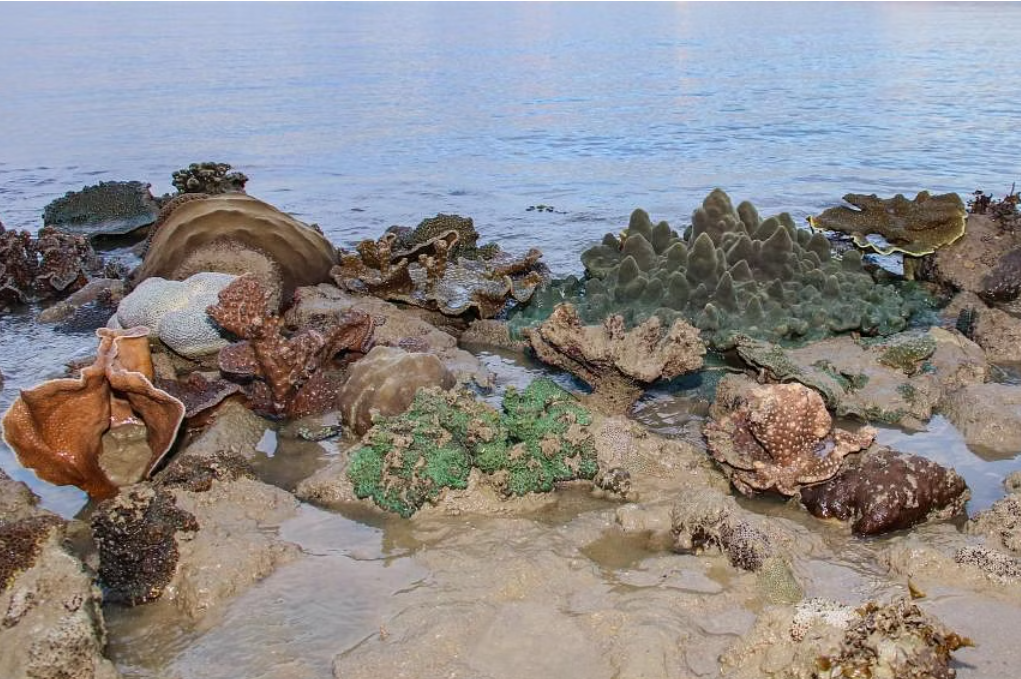
16. Science Journals: Waves of Change for Singapore’s Coral Reef Research
Singapore: In the human world, some relationships fall apart at the first sign of trouble. Yet in other matches, one helps the other through tough times. So too in the coral world do these fortuitous couplings exist, with specific pairings between coral and microbiome conferring the organism with more resilience against heat stress.“Depending on the association between the coral and its microbes, the coral can be more resilient to stress,” said Dr Huang, who also leads the NUS Reef Ecology Laboratory.
What these pairings are is something that Dr Huang wants to find out. With a research grant he received under the Marine Climate Change Science Programme, Dr Huang and his team will play matchmaker, looking for the best matches between coral and microbes that allow the holobiont (referring to both the coral itself and its microbiome) to survive in an ocean set to boil.

17. U.S. Senator Angus King Joins Charge to Curb Pollution Threat Posed by Foam Containers
Washington D.C. – U.S. Senator Angus King introduced bicameral legislation to phase out single-use plastic foam food service products, “loose fill” such as packing peanuts, and non-medical disposable coolers – materials known to cause adverse health effects and pollute waterways. The Farewell to Foam Act would prohibit the sale and distribution of these items beginning January 2026 while aiming to support the transition to alternatives.
Expanded polystyrene (EPS), known more commonly as plastic foam, is one of the most harmful forms of single-use plastic. These materials, which also often contain other toxic additives such as flame retardants and colorants, are known to have negative impacts on human health, with links to central nervous system damage and increased risk of cancer. Additionally, they are difficult to recycle and prone to break up into tiny pieces – or microplastics – and often wash away into the environment.
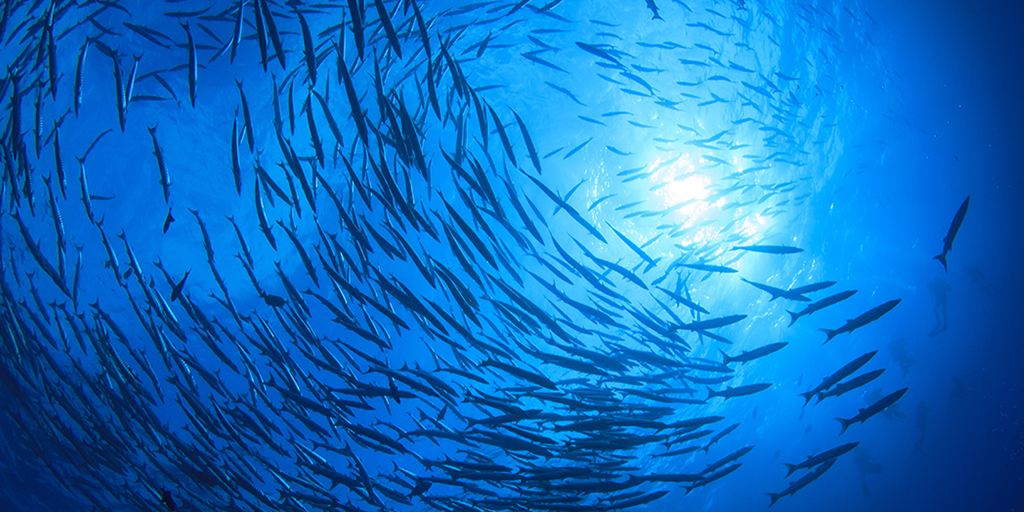
18. Companies Urged to Issue Blue Bonds
Manila, Philippines, The Securities and Exchange Commission (SEC) encouraged more corporations to make use of blue bonds in raising capital for investments in projects that directly aim to address sustainable water management and ocean protection. “As we unveil the guidelines on blue bond issuances, we take a giant leap toward fostering a sustainable blue economy and building a robust capital market in our country,” SEC Chairman Emilio Aquino said.
“Blue bonds, as a specialized class of debt securities, are emerging as a powerful tool globally to promote environmental sustainability, not only in the corporate sector but also at the sovereign level,” he added. “These bonds provide a unique opportunity for us to channel investments into projects that support marine conservation, sustainable fisheries, and responsible aquaculture.” The commission noted that blue projects should “substantially contribute” to the United Nations Sustainable Development Goals (SDGs) 6 and 14.
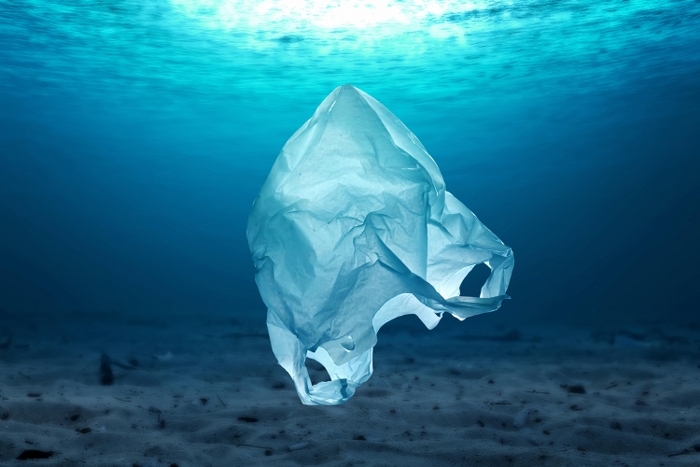
19. Anne Arundel County Plastic Reduction Act to Take Effect
Annapolis, Maryland, USA, Beginning Jan. 1, 2024, businesses in Anne Arundel County will no longer provide plastic bags to customers, as the Bring Your Own Bag Plastic Reduction Act takes effect. Anne Arundel County Executive Steuart Pittman encouraged residents to bring reusable bags with them to shop, to help protect the environment. “Our residents take pride in the beauty and natural resources of the land and water where we live,” said Pittman.
“This bag ban is a collective act that will make this place cleaner and healthier for our residents and our wildlife.” The new law aims to significantly reduce the contribution to plastic waste, litter, and pollution by reducing the number of single-use plastic carryout bags. The plastics typically used in bags contain chemical additives that become microplastics that pollute the environment and pose serious health threats to both humans and wildlife.

20. Concerns Aired Over Illegal Wildlife Trade
COP28, Dubai, UAE, The astonishing scale, nature, and consequences of illegal wildlife trade across the globe mean that it should be put on the agenda of the climate club, as well as biodiversity, heard a panel at COP28 on Saturday. The panel, titled “Wildlife Crime, Biodiversity, and Climate Change”, was held at the Climate Finance Stage at the 28th session of the Conference of the Parties in Dubai. The event was organized by Emirates NBD, one of the UAE’s top banks.
Participants discussed challenges brought about by illegal wildlife trade, its connections to organized crime, the socioeconomic effects on local communities, and the implications for global sustainability. According to experts on the panel, illegal wildlife trade has become a critical concern affecting not only the survival of numerous species but also the climate and biodiversity. It disrupts ecosystems, endangering the balance of our planet.
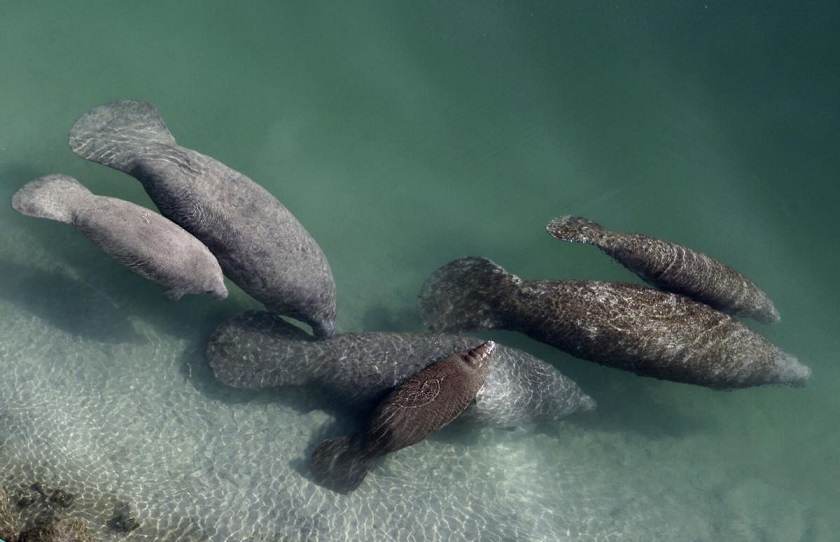
21. Florida Discontinues Manatee Winter Feeding Program After Seagrass Conditions Improve
St. Petersburg, Flordia — A two-year experimental feeding program for starving Florida manatees will not immediately resume this winter as conditions have improved for the threatened marine mammals and the seagrass on which they depend, wildlife officials said. Thousands of pounds of lettuce were fed to manatees that typically gather in winter months near the warm-water discharge of a power plant on Florida’s east coast.
State and federal wildlife officials launched the program after pollution killed off vast seagrass beds, leading to a record of over 1,100 manatee deaths in 2021. This season, the Florida Fish and Wildlife Conservation Commission and U.S. Fish and Wildlife Service determined the seagrass has started to recover in key winter foraging areas on the east coast, and that there appear to be fewer manatees in poor physical condition going into the stressful colder months.
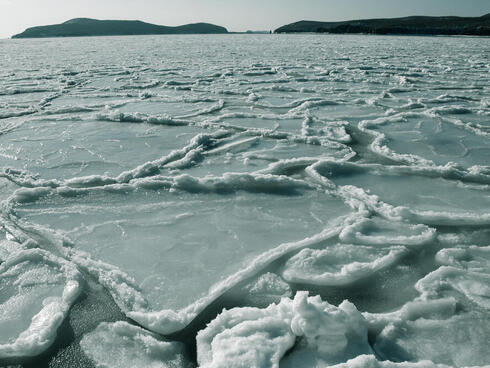
22. But…“Did You Know?”
The phrase “But did you know?” is a common way to introduce a new piece of information in a conversation. To point our loyal readers to a plethora of Environmental Conservation information we point you to the “INSIGHTSISA” website. InsightsIAS has redefined, revolutionized, and simplified the way aspirants prepare for the Union Public Service Commission (UPSC) Civil Services Exam.
Today it’s India’s top website and an institution when it comes to imparting quality content, guidance, and teaching for the Indian Administrative Service (IAS) Exam. Explore, Enjoy, and Expand your knowledge base!




